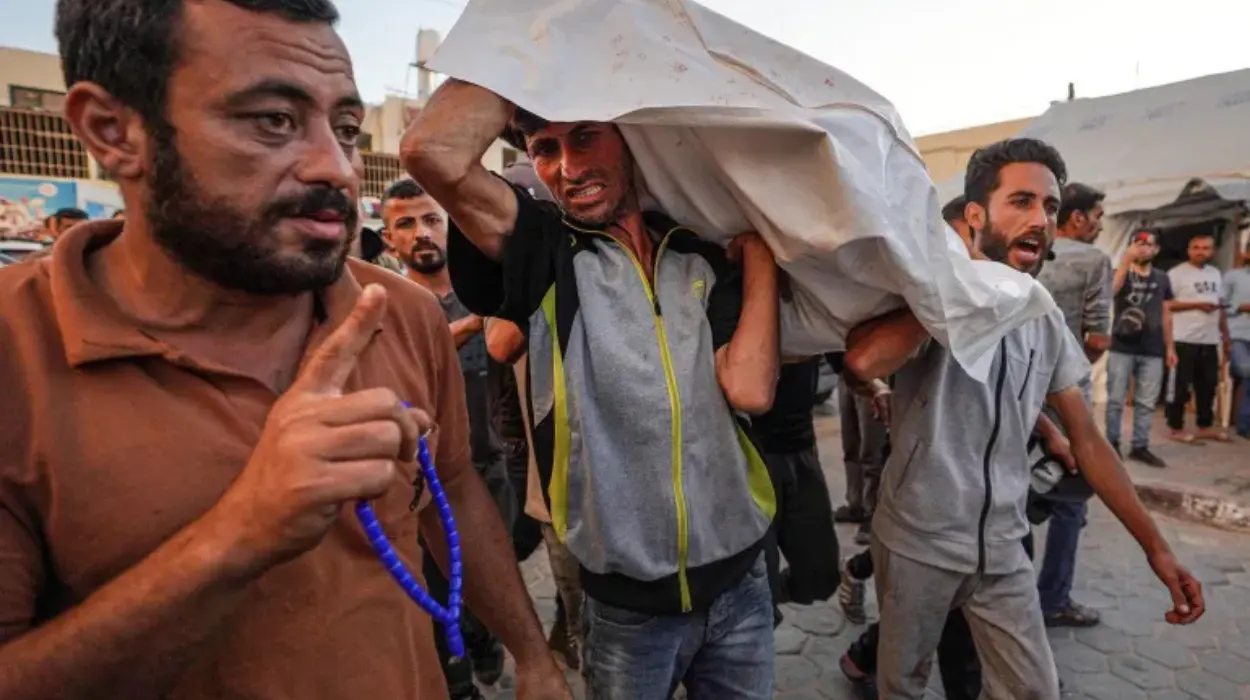Hamas (Transatlantic Today)— Hamas has announced that ceasefire negotiations with Israel have stalled amid a backdrop of widespread protests in Tel Aviv, where tens of thousands are demanding the government secure the release of captives and finalize a peace deal.
Osama Hamdan, a senior Hamas official in Lebanon, stated on Saturday that the group remains open to discussing any truce proposal that would put an end to the nearly nine-month conflict.
Arab mediators, supported by the United States, have struggled to reach an agreement, with both sides blaming each other for the deadlock. Hamas insists that any deal must result in a permanent end to hostilities and a full Israeli withdrawal from Gaza. Conversely, Israel is only willing to consider temporary ceasefires until Hamas, which has governed Gaza since 2007, is “eradicated.”
Hamdan accused the United States of exerting pressure on Hamas to accept Israeli terms.
Protest organizers in Tel Aviv estimated that around 130,000 Israelis gathered downtown on Saturday night, demanding an immediate ceasefire to facilitate the return of captives.
During a press conference outside the defense ministry, family members of those held in Gaza expressed their frustrations. One unidentified relative urged, “Do not let Netanyahu sabotage the deal again,” asserting that the prime minister’s desire to prolong the war jeopardizes the lives of hostages. They suggested that Netanyahu’s motivations might be political, fearing that reaching a deal could lead to early elections and threaten his leadership.
In a related development, a senior Biden administration official informed The Associated Press that the U.S. has provided new language to intermediaries in Egypt and Qatar in an attempt to revive the stalled Israel-Hamas negotiations. This revised approach is part of a three-phase deal proposed by President Biden.
The first phase includes a “full and complete ceasefire,” the withdrawal of Israeli forces from densely populated areas of Gaza, and the release of captives—specifically women, the elderly, and the wounded—in exchange for hundreds of Palestinian prisoners.
The parties are expected to negotiate the terms of the second phase within the first 42 days. Hamas could release all remaining male captives in exchange for an agreed number of Palestinian prisoners. However, these releases are contingent upon the establishment of “sustainable calm” and the withdrawal of Israeli troops from Gaza.
The new proposal aims to address discrepancies between the two sides regarding the negotiation framework for transitioning from the first to the second phase. Hamas seeks negotiations centered on the number and identity of Palestinian prisoners to be released, while Israel wants a broader dialogue that includes the demilitarization of Hamas-controlled territories.
Hamdan indicated that Hamas has yet to receive a new ceasefire proposal from mediators. Additionally, Hamas political leader Ismail Haniyeh recently communicated with the head of Egypt’s intelligence service to discuss the ongoing negotiations.
As discussions continue, there are growing concerns about the potential for a wider conflict. Both Hezbollah, an ally of Hamas, and Israeli officials have issued threats of significant escalation. Analysts warn that a full-scale war between northern Israel and southern Lebanon could have disastrous implications for the region.
In light of these tensions, several countries, including Saudi Arabia, have advised their nationals to leave Lebanon immediately. Israeli Defense Minister Yoav Gallant has threatened to devastate Lebanon if conflict escalates, while Iran has warned of an “obliterating war” should Israel attack its territory.
Egyptian President Abdel Fattah el-Sisi called for urgent international intervention to prevent what he termed an “unprecedented” escalation of the conflict in the region.


























